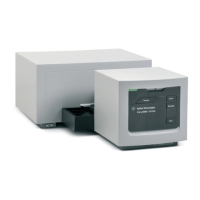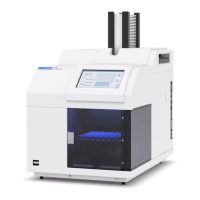Understanding Your Agilent ChemStation 155
Calibration
7
Recalibration
Recalibration
What is Recalibration?
Recalibration is the process used when you want to update a level on a
calibration curve. When you recalibrate you run another sample that contains
the same calibration compounds as the original, and most important, the same
amount of these compounds. When you run the calibration sample, you obtain
updated response factors and retention/migration times. You may also choose
to average the response factors over a number of calibration runs so that
response factors are weighted equally.
Why Recalibrate?
Most calibrations have a limited lifetime, due to changes in chromatography.
Recalibration is necessary to maintain the accuracy of the analysis. For
example, assume you have created a calibration table for the compound
caffeine which you use whenever you are required to quantify samples
containing caffeine. At some point you will need to replace the
column/capillary. Although the column/capillary is replaced with exactly the
same type, it will not behave in exactly the same way as the previous
column/capillary when you first created the calibration table for caffeine.
Therefore, to ensure consistency you should recalibrate the levels in the
calibration table before using the new column/capillary to analyze samples
containing unknown amounts of caffeine. By doing this you are quantifying
samples analyzed under the same system conditions.
Manual Recalibration
You can enter peak calibration information manually and normalize the
calibration table using the Manual Setup option button in the New Calibration
Table dialog box. Typically, a new calibration method is produced by running a
calibration standard mixture, creating a calibration table, and entering the
amounts of all calibrated peaks to obtain response factors. This approach is

